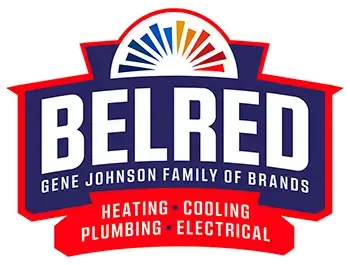The world of home comfort is changing quickly, and heat pumps are at the center of that shift. With more homeowners in the Seattle area embracing efficient heating and cooling, the systems themselves are evolving to meet new performance and environmental standards. One of the biggest updates coming our way is the new refrigerant requirements that officially take effect in 2025.
These changes affect what types of heat pumps can be sold, how they operate, and even what technicians can do when servicing older equipment. If you are thinking about replacing your current system or installing a new heat pump soon, these updates are worth understanding. The refrigerant you choose today can affect performance, long-term costs, and even future availability of parts and service.
Understanding the 2025 Refrigerant Mandate and What It Means for Homeowners
The 2025 refrigerant mandate is a major step in the national effort to reduce emissions linked to climate change. The Environmental Protection Agency is phasing out older refrigerants, including R410A, due to their high Global Warming Potential. In their place, manufacturers must shift toward low-GWP refrigerants such as R-454B and R-32. These refrigerants are more environmentally friendly and help reduce the long-term impact of home heating and cooling.
Here is how the transition affects homeowners:
- After January 1, 2025, new heating and cooling equipment must use approved low-GWP refrigerants
- Older R410A systems can still be serviced, but their long-term support will gradually shrink
- Manufacturers are redesigning equipment to accommodate the new refrigerants
- Technicians will follow updated refrigerant safety guidelines
The goal is not to create hardship for homeowners. In fact, the positive impact of the refrigerant mandate includes more efficient systems, lower emissions, and better compatibility with future regulations. If you are considering a system replacement in the next year or two, this mandate should play a role in your decision-making timeline.
What Makes the New Refrigerants Different?
The most noticeable change with R-454B and R-32 is their much lower Global Warming Potential. Both refrigerants cool and heat efficiently, and they require updated system designs to operate at peak performance. These new systems tend to run more efficiently, and they often offer better comfort control, especially during Seattle’s chilly, damp winters.
Key differences include:
- Lower environmental impact compared to R410A
- Slightly different pressure requirements inside the system
- New safety guidelines during installation and servicing
- Improved heat absorption and release capabilities
These refrigerants are not drop-in replacements for older systems. That means homeowners cannot simply top off an older unit with a new refrigerant. The equipment must be specifically designed for whichever refrigerant it uses. If you currently own a heat pump with R410A, it will continue to run safely, but any future heat pump repair or heat pump replacement may involve decisions about long-term viability.
Will the New Refrigerants Be More Expensive?
This is one of the most common questions we hear from Seattle-area homeowners, and the simple answer is yes and no. During the early part of the refrigerant transition, newer refrigerants like R-454B may be slightly more expensive due to limited supply and the ramp-up phase for manufacturers. However, long-term, the cost is expected to stabilize.
Several factors affect pricing:
- Production costs and supply chain availability
- Whether older refrigerants become harder to source
- Equipment design and efficiency improvements
- Industry-wide adoption timelines
What usually surprises people is that the refrigerant itself is only one part of the cost. Because the new systems are more efficient, homeowners may actually save money on energy bills. In many cases, these savings help offset minor cost differences in refrigerant. As the market fully transitions, the new refrigerants should eventually become readily available and affordable.
Will Heat Pumps Become More Expensive Because of the New Rules?
New system designs generally come with updated components, redesigned compressors, and improved safety controls. This can lead to slightly higher upfront prices for some models. However, the new systems are also more efficient, which can help reduce monthly heating and cooling costs. Many manufacturers see the refrigerant transition as an opportunity to upgrade performance across the board.
When comparing costs, consider:
- Higher efficiency ratings that improve long-term savings
- Better durability due to modernized system components
- Utility incentives or rebates for eco-friendly equipment
- State or federal tax credits linked to energy-efficient upgrades
The good news is that the price increases are not expected to be dramatic. Most homeowners will notice that pricing stays relatively stable, especially as more manufacturers roll out larger product lines designed around R-454B and R-32. And in many cases, improved performance makes the new systems a better investment over time.
How Rebates and Incentives Influence Your 2025 Heat Pump Decision
One bright spot in the refrigerant changes is that many homeowners can take advantage of rebates and incentives when upgrading to a new system. Because the 2025 refrigerant mandate supports cleaner, more efficient heating, both state and federal programs often offer financial incentives for choosing qualifying heat pumps. These rebates can significantly reduce the upfront cost of replacing an older R410A system, especially if you choose a model using R-454B or R-32.
In many cases, rebates stack with utility incentives, giving homeowners even more savings. Some programs also include credits for low-income households or for major home efficiency upgrades. If you are planning a replacement in the near future, it is worth checking what programs apply to your home. BelRed can walk you through the available options so you do not miss out on valuable savings.
What Should You Do If Your Current System Uses R410A?
If your system is running well, there is no need to replace it just because of the refrigerant changes. R410A will not suddenly disappear, and technicians will continue offering heat pump services and repairs for those systems. Homeowners should plan for the long term, though, especially if their heat pump is older than 12 to 15 years.
Here are some steps to consider:
- Schedule annual maintenance to keep the system running efficiently
- Ask your technician about long-term repair expectations
- Start planning a future replacement timeline if the system is aging
- Consider budget planning for upcoming upgrades
The refrigerant mandate does not mean your system becomes outdated overnight. It simply means that as your equipment ages, the availability of parts and refrigerant will gradually tighten. Planning ahead can help you avoid sudden surprises or emergency expenses.
What Should You Do If Your System Needs a Refrigerant Recharge?
If you run into a leak or performance issue that requires a refrigerant recharge, it is important to address the situation promptly. Recharging an older heat pump is still fully possible with R410A, and technicians can repair leaks, replace damaged lines, or test pressure levels. The challenge is that R410A prices may trend upward as production slows down.
Your best approach is:
- Fix leaks instead of topping off refrigerant
- Have a technician check the system for overall wear
- Consider whether repeated recharges signal deeper problems
- Compare repair costs with long-term replacement benefits
In some cases, a system that requires frequent recharging may be approaching the end of its useful life. At that point, replacing the unit with a new R-454B or R-32 system may be a better value. A trusted technician can walk you through the costs and benefits so you are not left guessing.
How the New Refrigerants Improve Long-Term Heat Pump Performance
While change often feels a little uncomfortable, the new refrigerants offer several long-term advantages. Many manufacturers have used this transition as an opportunity to redesign systems for better reliability and better year-round efficiency. This is especially good news for the Pacific Northwest, where damp, chilly winters can strain older systems.
The new refrigerants help improve:
- Heating performance in cold temperatures
- System longevity due to updated components
- Efficiency ratings that lower monthly energy bills
- Compatibility with future regulations
- Safety improvements related to system design
When homeowners ask whether this transition is worth the trouble, we often explain that the industry has gone through similar changes before. Each time, the performance of equipment improves, and the long-term benefits become clear. Many homeowners will eventually see these new systems as the standard for comfort and energy savings.
Contact BelRed Today for Any Heat Pump-Related Refrigerant Questions or Issues
If you are feeling unsure about the new refrigerant rules, you are not alone. Plenty of homeowners are wondering when to upgrade, how to handle repairs, and what these changes mean for their long-term comfort. Our team at BelRed is here to guide you through every step.
Whether you need advice on replacement timing, help comparing new systems, or support during a heat pump repair or heat pump replacement, our technicians are trained and fully prepared for the refrigerant changes coming in 2025. Reach out anytime for expert help, honest answers, and dependable service throughout the Greater Seattle area.







